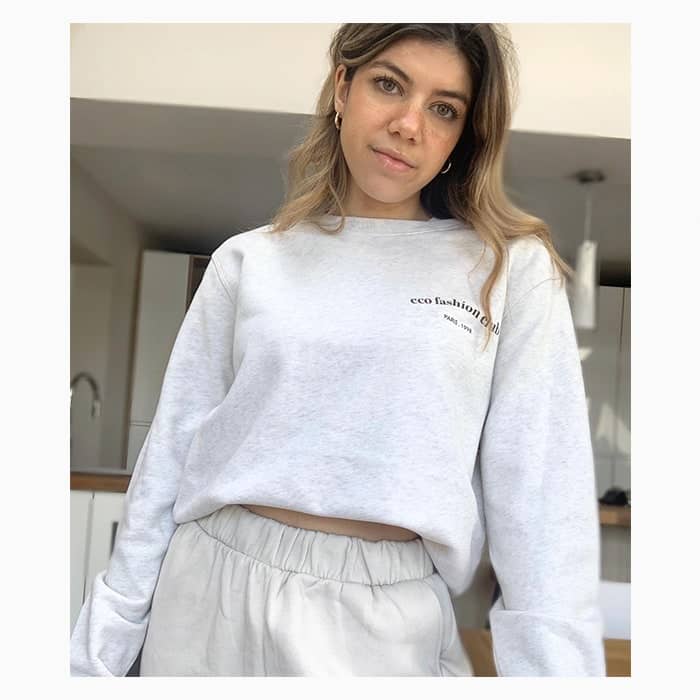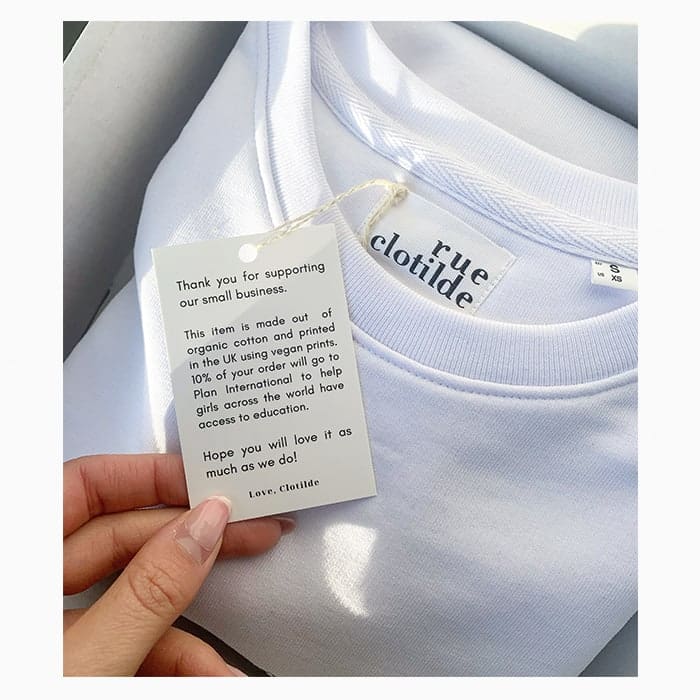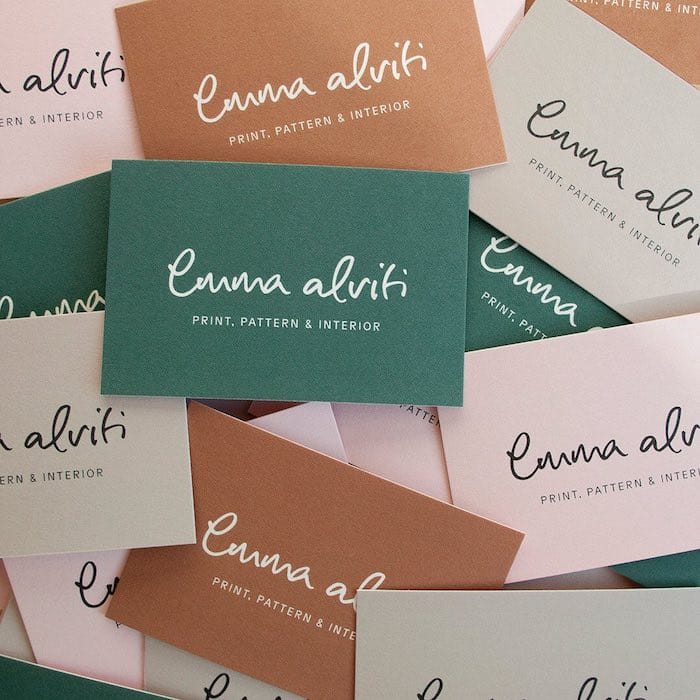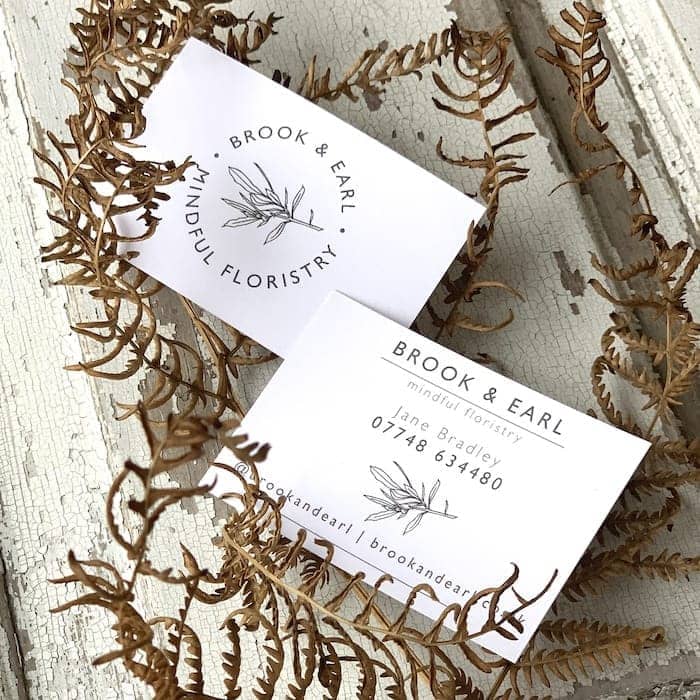5 New Year’s resolutions to work smarter in 2022
Why strive to be a harder worker when you can be a smarter worker?
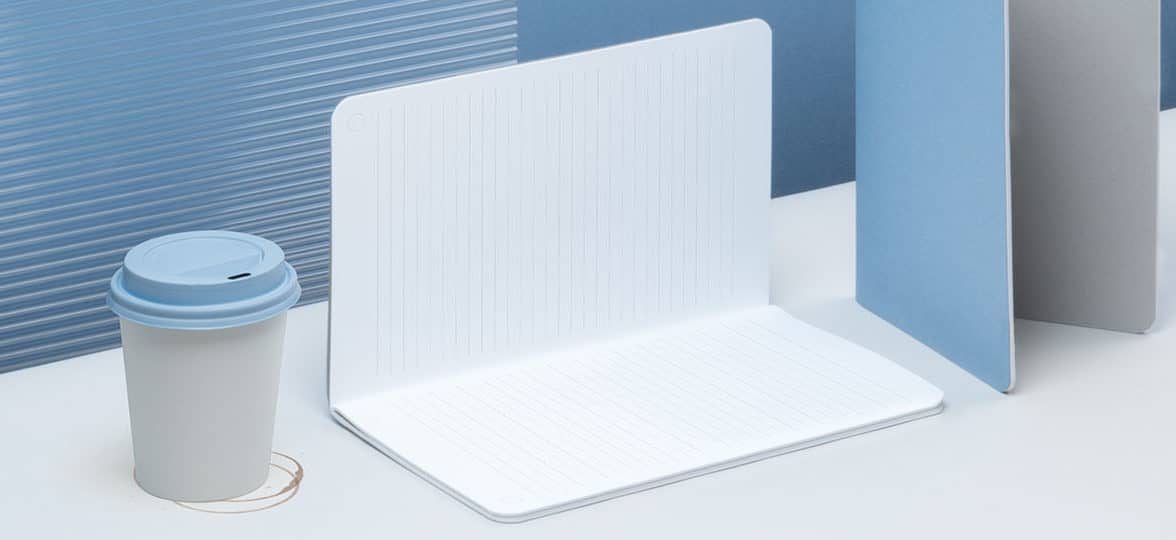
New year, new you – we’ve heard this time and time again. The expectation to become a brand new person when the clock strikes midnight is one of these tricks we keep playing on ourselves.
Of course, you can change, but realistic resolutions that help you better yourself while taking care of your wellbeing can ensure you don’t end the year setting crazy standards for the one to come. This applies to work, too. Why strive to be a harder worker when you can be a smarter worker?
Revisit your New Year’s resolutions in light of the past one. Chances are you were hoping to do more, more, more, and ended up overworking yourself. This year, why don’t you commit to achieving more with less? We’ll get you started: here are five New Year’s resolutions to help you work smarter in 2022.
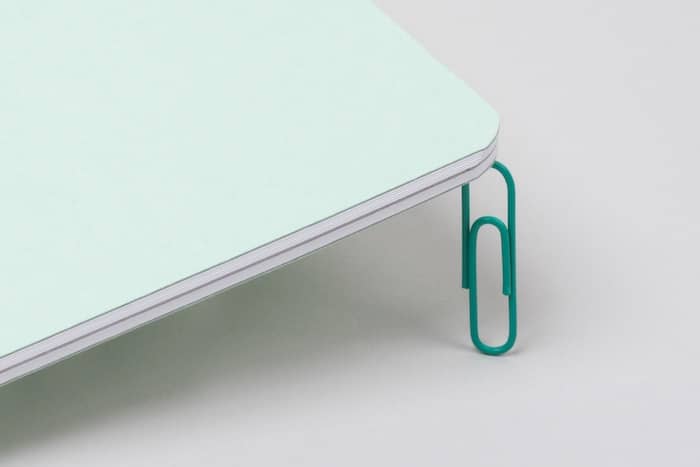
1. Make mental health your priority
Self-care doesn’t stop at the door of your office. If you think of your own wellbeing as an indulgence, think again. Wellness is essential to good work – after all, you can’t work without your brain. Believing that you can put your mental health on mute to deliver more, faster, is an illusion.
Issues such as anxiety and depression can affect your ability to focus, your energy levels, and many other facets of your work life such as your collaboration skills. In turn, overworking yourself can impact negatively on your healing process and even worsen your symptoms.
Inject self-care routines into your work life
To work smarter, you need to inject self-care routines into your work life. What does that look like? Take regular breaks, never miss a meal, set work hours on your calendar, learn to say no, and don’t be afraid to request a mental health emergency day if it all feels too much. Your employer might even provide some mental health support services at work. Some organizations also offer workshops to help you deal with mental health-related issues – ask your company if they’d be willing to set one up. Here at MOO, we’re working with Shine Initiative – and let us tell you, it’s been incredibly helpful.
2. Collaborate more
Smart working and collaboration go hand in hand. Collaboration can spark unexpectedly brilliant ideas you wouldn’t have thought of on your own. Different people, different skills, different ways to approach problem-solving: the perfect mix for coming up with out-of-the-box ideas.
Do you have colleagues or peers you can talk to when faced with a challenge? Putting your heads together and brainstorming as a team can help you work smarter and open your creative horizons. It’s also a great way to unload some of the stress and pressure you might feel on your shoulders. Plus, it’s nice to have someone to talk to!

3. Prioritize your workload
Work-related stress often comes from a workload that feels insurmountable. If you constantly have A LOT on your plate, it’s hard to give 100% all of the time. Prioritizing your workload is simple, but it can do a lot to relieve stress and help you work smarter. What does it look like, in practice? Even if it feels like you don’t have time for it, when it all gets too much, take a few minutes to write down all your tasks on your Notebook (or laptop, we don’t judge).
Some of these tasks might look tiny, and it’s easy to fall into the trap, but you shouldn’t prioritize them based on the satisfaction of quickly crossing a bunch of items from your to-do. Small tasks are the kind of things that will come up on a daily basis, so make sure you look at their deadline rather than their size when assessing your priorities.
You can save some time every day for these “one-off” items, but make sure you keep enough time for bigger tasks. Group tasks by priority or similarity to save time and effort – it’s always easier to move to a similar task once you’re on a roll. If you’re not sure about timelines, don’t hesitate to ask the task initiator – and negotiate deadlines that seem unrealistic.
4. Learn to delegate
It’s hard to let go, and yet, delegating is one of the keys to smarter working. You don’t have to do everything on your own! If you’re part of a team, you need to think of it as one entity. In that sense, the amount of work you receive should be equally distributed amongst your team members according to their skills. That means if the request comes to you and you’re already at maximum capacity, you don’t need to carve extra time for it, you simply need to redistribute.
You don’t have to do everything on your own
There’s no shame in delegating. It shows you’re able to manage your workload and recognize your limits. It’s also an essential learning opportunity for junior team members who will gain a lot from taking on a new task. You might think you’re wasting time training someone when you could have done it faster on your own, but in the longer term, you’re passing on knowledge that they’ll be able to apply next time you need to delegate.
5. Get the right training
Training is essential to growing in your career. Expanding your knowledge is the best way to work smarter and explore new horizons. Not only does it help you save time and energy at work by providing you with the right tools, it also helps you see the bigger picture and understand the connection between your current role and the infinite possibilities out there.
Don’t pass on opportunities to develop your skills at work. Most companies offer in-house workshops or training budgets, but many people don’t take advantage of them. If you feel like you could benefit from more training, now is the time to speak to your manager!
It’s the year to work smarter! Plan ahead and get your New Year’s resolutions on paper with MOO Notebooks & Journals.
You’ve got an amazing idea (or two, or three), but don’t know where to start. But is now a good time to start a business? You’re not alone, many budding entrepreneurs struggle with that first big step. Whether it’s a new app or a career as a creative – that leap is scary stuff.
The truth is that there’s never an ideal time to start your own business. It’s like any other personal decision, if you wait for exactly the right time, you’ll never do it. No time is the perfect time, but there are a few things that can help set you up for success.
So how do you go from bright spark to start-up? Here’s six top signs you’re ready to get out of your comfort zone and into the unknown:
1. You’ve had that Eureka! moment
It might have been while you were daydreaming, or it might have come to you slowly over time – but you’ve had that lightbulb moment. Many great entrepreneurs actually started their companies near business recessions and depressions. So if you believe your idea fills a need or niche and the market is ready for it, it might be time to go for it.
2. You’ve done your research
At the heart of every great idea is who it’s for. Your target audience are the people who need or want your product or service, and will help your business be a success. Do you know who they are? Knowing your audience will help you reach the right people on social media and where you advertise, as well as give you the best chance of converting potential customers into real sales.
View this post on Instagram
3. You’re so excited
You truly believe in your idea and running your own business is something you crave. You’re always thinking about it. You’ve even talked to peers, friends and family about your idea and they think it’s brilliant too!
Being excited about your new venture won’t be enough to get it off the ground, but it does mean you’ve got the commitment, enthusiasm and drive to take the necessary risks to make it a success. Maybe you’re so eager to get started you’ve even gone ahead and ordered your new Business Cards.
4. You have the time and resources
You know what your business is and who it’s for. But can you get it up and running? The amount of money you need to start and run your own business depends on what it is. For example, someone starting a blog will have very few expenses.
But, someone starting a business with a store or lots of equipment will need more money or credit at their fingertips to get set up. And it’s not just launching and running the business that needs a cash injection – you’ll still need to support yourself too. Think about if you have enough savings to start a company and quit your day job. Or if you should start small as a side hustle and build from there.
5. You’ve got the skills
It might sound silly, but do you have the skills for your idea? Can you start your business on your own or will you need to employ someone with the skills you’re missing? There are lots of ins and outs to consider when you first start your own business. For example, you might be a talented seamstress ready to launch your own clothing, but you’ll need someone to build your website so you can take orders.
These people could be partners if you need their skills long-term. Or they could be freelancers you only need in the first stages of building your business. Don’t forget basic admin too (it’s so easy to overlook when you’re excited about your idea), like needing an accountant or a business bank account.
View this post on Instagram
6. You’ve made a plan
You’ve got a Notebook full of doodles, tables and lists. You’ve done your research and crunched the numbers. Only one big question remains – when do you actually launch your business?
It’s not always a case of “there’s no time like the present”, sometimes there might just be a time that makes strategic sense. For example, some people start businesses at the beginning of the year because of the belief in a fresh start associated with a new year. Others start their business when the market is strongest – a catering business might want to launch in the summer, to get plenty of traction before the busy holiday season.
If you read this and thought “that’s me”, now just might be the right time to start building your own business. So what are you waiting for? Get out there and show us what you’ve got!
Packaging should be anything but an afterthought. If your customers mean anything to you, you’ll wrap your products with the same love and care you put into their design. From the materials you use to your packaging inserts, nothing fosters brand loyalty better than a seamless unboxing experience.
Want to create an unboxing experience that’s memorable for the right reasons? Here’s what packaging fails look like – and how to avoid them.
Under-wrapping
It’s probably the most obvious packaging mistake you can make. You might want to play it cheap by trading a cardboard-backed envelope for a regular one, picking a non-waterproof box for your tech accessories or popping your fragile little items directly in the pouch without any cushioning. Unfortunately, what you save by cutting down on packaging might have a much higher cost further down the line.
Under-wrapping your products can impact the customer experience negatively. Your products might arrive damaged and make your customers more likely to return them and leave negative reviews. It also gives them the impression you don’t appreciate your customers, and aren’t committed to quality. Is it worth all those hours developing the perfect product if your packaging spoils it?
Overpacking
It’s all about balance. Like Cinderella’s shoe, you have to find the perfect fit when it comes to packaging. While too little can harm your brand, overpackaging is also very much a thing. You want your products to be safe on their journey, yes, but the environment shouldn’t have to pay for it.
The annoyance factor is also important. Ever received an absurdly overwrapped item in the post? No one likes to play Russian dolls with their parcels. If your box is three times the size of your product and overloaded with foam and bubble wrap, you’ve probably gone too far.
Every item of packaging should have a purpose
So, how do you find the right balance and avoid a big packaging fail? Every item of packaging should have a purpose. Choose high-quality, and preferably recyclable, materials that will protect your products, and leave it there. Don’t hesitate to test different combinations to find which one creates the least waste.
Discover more ways to make your small business more sustainable here.
Being too generic
It’s nice to get a sense of anticipation when you receive a parcel. It’s also useful to get a hint of who the package is from before you even read the label. That’s why bland packaging is not only boring, it’s also confusing.
Being too generic is one of the most common packaging mistakes. With kraft or white boxes and a big barcode, you don’t say much about your brand – because you don’t let your customers see themselves in you. Like your parcel, they’ll feel like they’re receiving the same brown box as millions of others – no matter how unique your product is. By choosing bland packaging, you’re wasting a great opportunity to express your brand identity, spark excitement, and even intrigue the postman.
Like under-wrapping, anonymous packaging is often picked to reduce costs. Of course, not everyone can afford entirely customized, tailor-made packaging for their products, especially if you’re a small business. But there are ways you can add a touch of personality to your packaging without burning your budget.
Print some colorful branded Stickers to decorate your boxes and envelopes and add fun messages for your recipient. You can also make custom Return Address Labels to make your packaging look more professional. With Printfinity, you can even print a different design on every Sticker at no extra cost.
Being inconsistent
We’ll never say it enough: brand consistency is key. While you want to provide your new customers with a seamless unboxing experience, it’s also important to think about returning customers when you design your packaging.
If they’re used to a certain standard, you should make sure you stay up to it and clearly communicate the reasons behind any changes. You might be changing it to better protect your products or reduce your environmental impact – in any case, it’s better to explain yourself than let customers think you’ve lost interest in their experience.
If you’re changing your unboxing design, branded Stickers can also be useful to create a sense of continuity and stay recognizable to your customers. Consider adding a note on your website, in the order confirmation, or directly in the parcel if you’re making drastic changes (like using recycled wrapping paper). Chances are your audience will appreciate your honesty and feel even closer to your brand.
Forgetting the inserts
Good packaging is not just about the outside – the inside counts too. Putting a full stop to the unboxing experience as soon as customers open the parcel means you miss out on even more ways to create excitement. Avoid this packaging mistake with inserts.
Packaging inserts can be many things – Thank You Cards, coupons, instructions – but one thing is for sure: forgetting them is a big packaging mistake. Put yourself in your customers’ shoes. Leaving them with not so much as a note is like shoving your product in their hands without saying a word.
Start by saying a little thank you. Depending on your product, your audience and your objectives as a business, you can add a variety of inserts to surprise and delight your customers while making the most of your sale. Get inspired and uncover the secrets of the best packaging inserts with our handy guide.
And it’s a wrap. Now you know how to make packaging fails a thing of the past, personalize your unboxing experience with MOO Stickers and Postcards.
Have you started thinking about your company’s holiday party yet? Time might be sneaking up on you, but there’s still time to plan a bash your employees will be excited about and spread some holiday cheer.
Whatever your budget or company culture, there’s a holiday party idea that’s perfect for your team. Don’t forget, the best gift this season is spending quality time with others. Fostering a sense of goodwill and friendship will make any event a memorable one.
Office holiday parties are a great way to bring everyone together. But there are lots of other ways to spread cheer for colleagues and clients, too. Have fun by thinking outside-the-box! Pulled right from the “nice” list, here’s six holiday games and activities to get your holiday party planning started:
-
Send holiday greetings
Simple but effective. Spread holiday cheer by sending personalized Greeting Cards to employees or colleagues to thank them for their hard work this year. Or send holiday hellos to clients and customers to let them know you appreciate them.
-
Give out prizes
Get everyone participating and create a party atmosphere with some work holiday party games, contests or competitions. From gingerbread and cookie decorating contests to the best tree designer or even karaoke champion. Get employees to show off their festive skills solo or in teams for the chance to win some goodies. A few tried-and-true ideas for prizes are:
- Gift cards
- Tech gadgets
- Fancy chocolate
- An extra holiday day
- Coffee mugs – fill them with candy, tea bags, or other treats
- Restaurant vouchers
- Branded gifts (like Water Bottles or Notebooks)
-
Have a group outing
Remember when escape rooms were all the rage? Find a fun activity for everyone to enjoy like ice skating or going to a gallery. Or split into teams for a treasure hunt. You could follow up your outing with a visit to a bar or restaurant for some warm drinks and nibbles.
-
Give back to the community
In true holiday spirit, put an altruistic spin on your work holiday party by using it as an opportunity to do good for others. One way to do this is to hold a drive. Ask your employees to bring in food for the food bank (non-perishable, of course) or toys and clothes for kids in need. Reach out to local schools or charities to find out who has the highest need and what you can donate.
-
Offer festive feasts and treats
Not everyone celebrates the same holidays and a bring-your-own style sharing feast is a great way to get everyone connected. Ask everyone to bring one dish to share then dig in and enjoy – whether it’s their grandmother’s secret family recipe or a cultural classic. It’s a great way to bring everyone together and learn a little bit about each other. Being remote workers in on the fun too, with a takeaway voucher or a hamper, so they can munch along with you.
-
Organize a skills-sharing workshop
It’s like a festive feast but with skills! Get your employees sharing their hidden talents and hobbies. It could be illustration, calligraphy or yodelling – the more weird and wonderful the better. It’s guaranteed to spread cheer and laughter.
So there you have it, a few festive activities, games, gifts, and holiday party ideas that will get all the adults feeling like kids again! It’s all about putting in a little effort so that your office party is as special as the holidays are with family and friends. For more inspiration on how to bring people together, check out our welcome back to work ideas.
Passionate about both fashion and the environment, Clotilde Lelièvre decided to connect the dots and create Rue Clotilde, a sustainable clothing brand that resonates with eco-conscious customers who don’t want to compromise on style.
As fashion is one of the industries most responsible for climate change, customers want to know what’s in their clothes – and who made them. The France-born Londoner looked into every facet of her production process to put sustainability and feminism at the core of her brand – while offering timeless pieces that transcend trends.
We met Rue Clotilde’s founder to talk about eco fashion and the connection between sustainability and feminism.
Tell us a bit more about yourself. Where does your interest in slow fashion come from?
I have always been passionate about fashion, probably because I grew up in Paris. For the past three years, I have been really interested in environmental issues such as fast fashion and how dangerous these industries are for the environment and workers.
It was all about creating a brand that would have a positive impact on the planet, the people and the customers
During my third year of uni, I had to create a “fictive company” and this is when Rue Clotilde was born in my mind. I wanted to indulge my love for fashion but do it in a way that would benefit the environment and the people involved. It was all about creating a brand that would have a positive impact on the planet, the people and the customers.
You mentioned Rue Clotilde started off as a student project. What motivated you to bring your clothing brand to life?
The first lockdown was hard on everyone. After a few weeks of watching Tiger King and making Dalgona coffees, I got bored and it was a make or break moment of “I have this great project that I hope will come to life one day” and realizing that this was the moment to do it. It was now or never – and everyday I thank myself that I had the courage to start.
View this post on Instagram
How does being an eco fashion brand translate into the various stages of the production process?
Creating an eco-fashion brand means thinking about how to be sustainable at every step of the production process. The materials used are sourced responsibly and are organic (even the labels are made of organic cotton) or recycled. The workers are paid and work in good conditions (certified by the Fair Wear Foundation), the printing process is made by a small business in the UK respecting UK regulations, the prints used are vegan and plastic-free, the packaging are completely plastic-free and recyclable, and lastly, a part of the profits are donated to Plan UK a charity that helps advance child rights and reduce inequalities for girls around the world.
Creating an eco-fashion brand means thinking about how to be sustainable at every step of the production process
You describe Rue Clotilde as a sustainable and feminist clothing brand. How are the two connected?
Sustainability and feminism are extremely connected, especially in the fast fashion industry because, in the words of Giada Nizzoli: “it’s a system that mainly relies on the disempowerment and exploitation of female garment workers in developing countries” and “80% of female workers are aged between 18 and 25, mostly working 14 hours a day… for less than $3”. Which means that T-shirts with feminist slogans that you can find online or in most fast fashion shops are actually the opposite of feminist. And it’s time to change that.
When did you decide to include charitable donations in your business model, and why Plan International?
When you read about the damages that fast fashion does on the workers, mostly females, it makes you want to change things. I am a feminist and I really wanted to go the extra mile to help as many people as possible through Rue Clotilde. The best way I could find was to raise awareness and help a charity.
Plan International is an incredible organization that helps children and especially young girls in developing countries have access to education, reduce child marriage, and give them better opportunities to be able to change their futures. We mentioned that sustainability in the fashion industry is a feminist issue and therefore giving back to Plan is a way to change that.
How do you go about finding inspiration for your collections?
My taste changes as I get older and I am lucky that our customers usually have a similar style to mine. I have always loved very minimalist and modern styles but could never find a “Pinterest aesthetic” brand that was sustainable. So I created it. I get inspired by Parisian fashion, but also about being comfortable, modern and stylish. I love looking through Instagram and Pinterest to find inspiration.
How does minimalism align with your approach to sustainable fashion?
One of the biggest issues of fast fashion is that brands create “new trends” every twelve weeks to force people to consume more. A key aspect of sustainability is keeping what you already have. Offering a range of minimalist products means that it doesn’t follow trends and therefore cannot go out of style. Which means that on top of the good quality garments, people will be able to keep our products for longer and reduce waste.
How do you share Rue Clotilde’s mission and values as a sustainable clothing brand with your audience?
We have thank you notes from MOO with every order to explain everything that we do to be sustainable. Our tags are also from MOO and contain a little note sharing Rue Clotilde’s missions. We also often share our feminist and sustainable values on our Instagram and our website.
What’s your favorite thing about running your own business? What’s the most challenging?
I love creating the products, it is by far my favorite thing to do. From having the idea in my head to seeing it in real life and then seeing people wearing our products, it always makes me so proud to see people wear something that I have created.
The most challenging thing is that running a business means doing everything on your own. I am lucky to be surrounded by amazing friends and family that are always happy to help but in the end, if something goes wrong, it is my responsibility to handle it.
How did you approach your promotion strategy when you launched Rue Clotilde?
When I started, I was a student with a limited budget and I decided to focus everything on social media, mostly on Instagram. Without social media, Rue Clotilde would not be where it is now. I have always been transparent and honest about everything that we do and people like that and are so encouraging on social media. I also love the creative aspect and having a visually satisfying feed helps!
How do you use MOO for your business?
I use MOO products when it comes to the packaging of the orders, I was able to create thank you cards of an amazing quality that describes everything that Rue Clotilde does. I also use Business Cards as my tags. I just punch a whole in the middle and use a string to tie them to the garments. They are so big I was able to write a lot on the back of them about what we do and actually people often keep them as bookmarks. Lastly, I use the mini Stickers from MOO after wrapping the products in recycled tissue paper. It gives it such a nice personal touch!
Any projects coming up you’d like to share?
A bunch of other small sustainable businesses and I are working on organizing a big end of the year giveaway which is very exciting! Keep your eyes peeled on our Instagram.
Do you have any advice for business owners wanting to move to a more sustainable and ethical business model?
It’s not about being perfect on day one, it’s about moving forward into the right direction. I always remind people that progress > perfection. Have a look at your production process and see how you can include ways to be more sustainable every step of the way. You can start with something as simple as changing your packaging to make it 100% recyclable or changing your manufacturer to one offering more sustainable production services.
It’s not about being perfect on day one, it’s about moving forward into the right direction
Feeling inspired by Rue Clotilde’s approach to sustainable fashion? Check out more tips to make your small business more sustainable here.
Being green doesn’t have to be boring. Done right, making your business more sustainable can actually look and feel amazing, and make an impact your clients won’t forget. Yes, you read that right: you can do good AND look good.
At MOO, we developed a tree-free Cotton paper made from 100% recycled T-shirt offcuts. It’s bright white, subtly textured and 18pt thick – so you can live your values without compromising on your look. And our community is making the most of it.
Get inspired with six brands and creatives who left a sustainable impression with beautifully designed Cotton Business Cards.
Emma Alviti: cotton to cotton
Manchester-based textile designer Emma Alviti creates textile and paper-based homeware made in the UK with natural materials. From cushions to wall hangings and art prints, she designs nature-inspired gifts with a soothing color palette.
With waste reduction at the core of her brand values, Emma chose Cotton Business Cards for their environmental credentials – but also their tactile finish. “I love that they use recycled T-shirt offcuts which would otherwise go to waste. I’m always keen to use every scrap of fabric myself and will soon be launching some “waste not” products to do just this. I also use cotton and linen for my textile products, avoiding the use of synthetic fibres as much as possible, so the 100% cotton stock is a lovely link.”
Emma put her graphic designer fiancé Nick Yates to the task, to develop a design that would convey her brand identity in a powerful way. “My logo incorporates a unique hand-drawn mark which reflects my designs as they are all originally painted by hand. We’ve combined the logo with a simple layout as we felt we should let my products do the talking.”
As color is a central aspect of Emma’s work, they matched the Business Cards with her designs with a muted, natural palette of alpine green, terracotta, taupe and a ldusty pink. That’s where Printfinity came in handy: “Other than the environmental aspect and beautiful finish, I love that I was able to print four different colorways of my business card to add extra interest.”
Brook & Earl: natural healing
North Yorkshire-based floral studio Brook & Earl came as an epiphany for founder Jane Bradley. After over 25 years in design and styling, she had become a carer for elderly family members, leaving her creative roots behind. Creativity was in her DNA, though, and it felt like something was missing. So when she attended a wreath-making course in 2016, something clicked. She’d found her happy place. A few years later, Brook & Earl (named after her two labradors) was born.
Beyond flowers, Brook & Earl is about nature and wellbeing, and supporting and empowering women. Jane uses creativity, mindfulness and floristry to nurture a safe creative sanctuary. Sustainability and seasonality are also at the core of the studio – so when Jane found that even her Business Cards could support her brand values and ethos, it was a no brainer.
“I absolutely love my recycled Cotton Business Cards. They ooze quality, sit perfectly alongside the principles of my brand, and give me great pleasure in knowing that they are made from stuff that would normally get thrown away! I’m also very slightly smug when I hand one over to a new client, as I know they look and feel amazing!”
A lover of simplicity, Jane’s branding is clean, sophisticated and memorable. She wanted to design something new that would also provide a sense of comfort and familiarity. The central olive branch symbolizes peace, friendship, reconciliation and is associated with cleansing, healing and light. A perfect summary of her journey and values.
Alexandra Necula: organic texture
Alexandra Necula is a creative studio based in Transylvania, Romania. It’s dedicated to helping sustainable, ethical and eco-friendly brands connect visually with their tribe through strategic, emotional design – a promise they keep for a variety of brands worldwide.
For home decor brand Kaplias, the studio developed branding that reflects their love for all things natural and hand-crafted. “The logotype has some subtle, Scandinavian motifs that remind of subtly slanted and minimal tables and chair, while the brand illustration reminds of natural, hand-crafted objects used in interior design, such as plants, ceramic vases, jute rugs and placemats, all designed in a hand-drawn, organic style.”
Cotton Business Cards were a perfect fit for the sustainable brand. First, because of their commitment to planet-friendly packaging. But they also perfectly complement the design, highlighting their illustrations with beautifully textured paper. “We absolutely love the natural texture of the Business Cards and the matte look and feel of the colors. They also have a really nice feeling to the touch.”
Jodie Newman: a winning combo
Jodie Newman is a passionate creative director and graphic designer based in Oxfordshire in the UK. She specializes in packaging design and print, specifically in the wine industry. This self-proclaimed “design geek” is always looking for the next label trend or font to play with – and it shows on her cleverly designed Business Cards.
She combined a lovely rounded serif font with a lightweight sans serif, curving the text into a circle like a halo. Thanks to Printfinity, Jodie was able to print her cards in three different colors, with a soft grey, a coral pink and a muted blue.
Passionate about the environment, Jodie practises what she preaches when it comes to sustainability. So for her own Business Cards, she chose MOO’s recycled Cotton paper. “They look fantastic, feel great and the quality of print and color is always super strong, meaning the information I’m communicating stands out and is easily legible whilst also being kind to our planet. A winning combo!”
Rey Riley: peaceful empowerment
Rey Riley is a British digital artist inspired by women, boho home decor and fashion. Her work aims to convey a sense of peaceful empowerment, often embodied by women relaxing in a tranquil environment, sometimes accompanied by plants and cats. “My art serves as a reminder to slow down and appreciate life’s simple pleasures, to look within, discover that you are enough and that it is never too late.”
As a small business owner, Rey is committed to making her brand more sustainable. “With online shopping increasing more and more and the Earth temperatures following along, every business can make a difference and it is my goal, as the business grows, to rethink how I design packaging and marketing materials.”
That’s where our recycled Business Cards came into play: “I was thrilled when I discovered MOO’s recycled Cotton Business Cards. As well as being tree-free, they are also bright white and have this amazing texture which elevates the designs, making each card look like a tiny painting!”
Rey used MOO’s Printfinity option to print a different design on the back of each card. “I have a small gallery of my artwork and wherever I go, people can choose which card design they would like to remember me by. […] They are also perfect to pop into every order.”
Studio Cari: simply timeless
Based in Dortmund, Germany, Lisa is the mind and head photographer behind Studio Cari Photography. She specializes in wedding, couple and portrait photography. When her business grew faster in 2021, she decided it was time to design her first business cards.
She created her cards with her values in mind: care deeply, make a difference every day and be sustainable. What better way to embody them than with tree-free Business Cards? With their natural texture, they’re also giving depth to her beautifully minimalist design.
“Because I like to let my photography speak for me, I wanted my business cards to have a very simple and timeless design. The only striking things are the color, which looks fresh and modern and the special texture of the card. The sustainable thought underlines my values and makes them very special for me.”
Feeling inspired? Leave a sustainable impression with our bright white and beautifully textured Cotton Business Cards.
October 2022 update: This article references the way we used to make Cotton Business Cards. We now use a different process.
Cultivating a little brand love from your customers doesn’t need to be complicated or expensive. Here’s how handwritten cards make a lasting impression.
Where would your business be without your customers? It’s true, without a loyal customer base, it would be hard to imagine doing business as usual. That’s why it’s so important to return the favor to those that help keep your business running. And what better way to do that than with some handwritten thank-you cards? We spoke with three business owners who have taken a personal approach to thanking their customers.
Thomas Sturm
Thomas Sturm is a designer based in Salzburg, Austria. Although he works for design agency, KISKA, he is also a freelancer, spending his spare time on smaller side and passion projects.
As an extra goodie to both his new and existing clients, Thomas gives out Postcards. “I always try to embrace the good times, the fun that often comes with freelancing and that I’m thankful to get to do the work I’m doing.” He says. As well as a thoughtful gesture, they act as his personal business cards and greeting cards for writing personalized messages. “Print is something real – it’s not a draft on your screen or something you can change if you’re not into it anymore. When it’s done, it’s done. And, of course, it’s personal”.
Thomas decided on the Luxe Postcards after ordering a sample pack: “I felt like the Luxe Postcards were the right thing to go with, especially with the yellow layer of paper in between – it goes well with the graphical elements embedded in my artwork. Most people I hand my Postcards over to don’t necessarily have the same attention to detail as I do when it comes to paper (compared to people who work in the same field as me). Still, the quality and the haptic aspects can be felt by everyone – this is what matters. So far, I’ve only heard positive reactions to my cards.”
Say “thanks” with Luxe Postcards.
Nikki Farquharson
Nikki Farquharson has built a freelance career from her passion for abstract, pattern and typography work. While studying at university, her interest was originally in minimalist design, but Nikki soon found her affinity in a more expressive style of illustration. Her unique, hand-drawn approach has lead her to land big clients such as Malibu Rum and MAC Cosmetics.
“Because I studied graphic design I assumed I’d be working a 9-5 job in a studio when I graduated,” Nikki explains. “When I realized there was another pathway – to go it alone – I guess I just took the leap. My main goal is to express myself and to be really happy with what I’m creating, then, if other people like it it’s a bonus.”
As an artist who prides herself on high-quality work, Nikki really values the impression that her brand leaves on her clients and customers. “I include my Luxe Business Card in every order as well as a MiniCard as a thank you note. Every package is then sealed with a Sticker with my logo on it. It’s important for me to show a genuine sense of love and care when packaging my work and MOO helps me achieve that.”
Make a lasting impression with Luxe Business Cards
Latigo Coffee
In need of a midday perk? You’re in luck. Los Angeles-based subscription coffee roaster Latigo Coffee has built a business on shipping the finest fresh-roasted coffee anywhere in the US. Originally working for a technology start-up, Mark Finster quit his desk job to pursue his love of coffee. Mark spent years travelling the world, working on coffee farms and searching for the most awesome beans. Fuelled by his passion – and a lot of espressos, no doubt – Latigo Coffee was born.
This sense of adventure filters through the brand ethos, too. Latigo prides itself on advocating the outdoor life, urging customers to “grab some beans, get outside and get after it” – not forgetting to tag their travels on Instagram using #latigocoffee, of course.
As a business that revolves around packaging and shipping, it’s no surprise that Latigo puts a huge amount of care into the unboxing experience. “It was important to us from day one,” Mark explains. As a token of appreciation to each customer, Latigo includes a “thank you” Flyer in each package, with an illustration of a tandem surfer and a chemex coffee maker. “The Square Flyers from MOO were the perfect fit (literally) for our packages,” Mark says. “People love receiving handwritten notes! These box inserts are integral to the business.”
Print your compliment slips on Flyers.
Originally published on Sep 26, 2018








